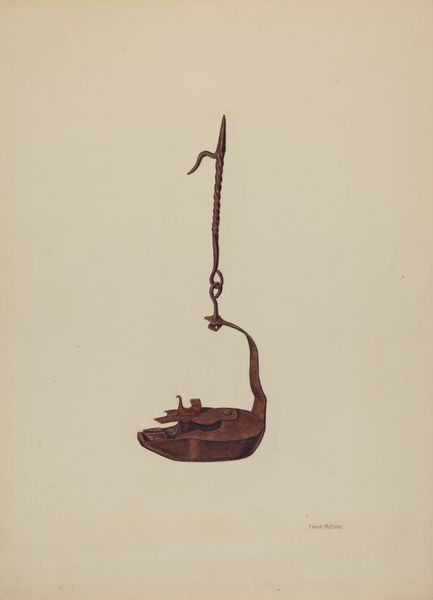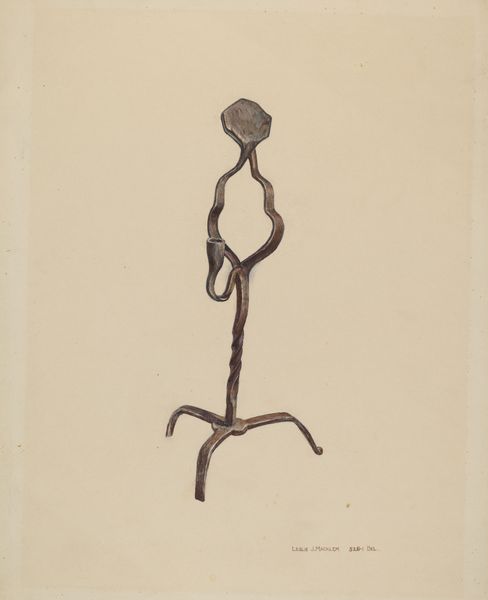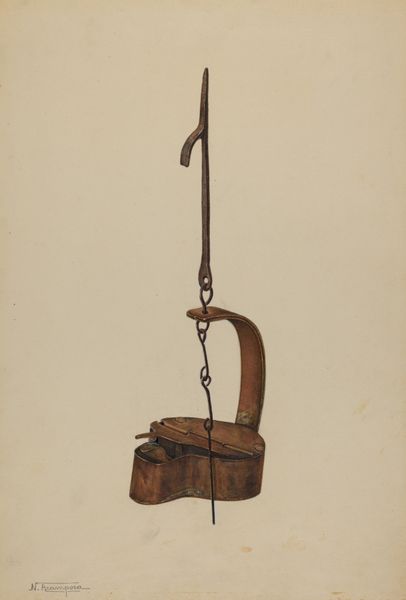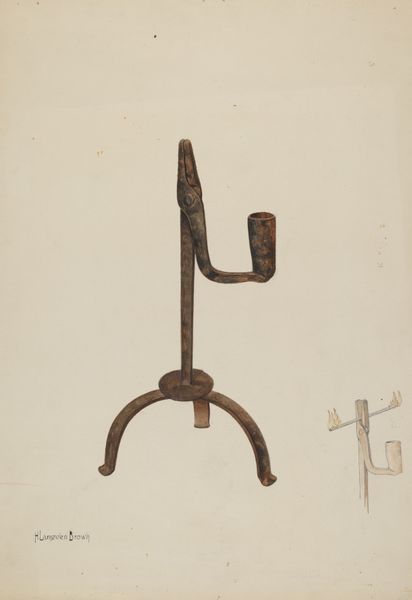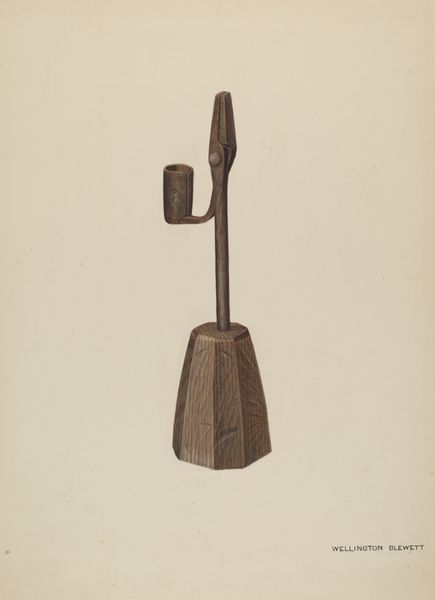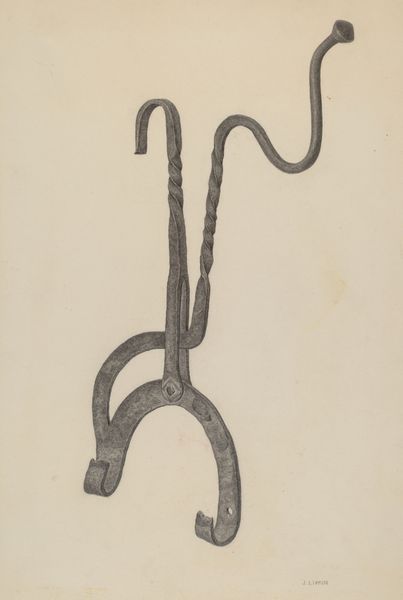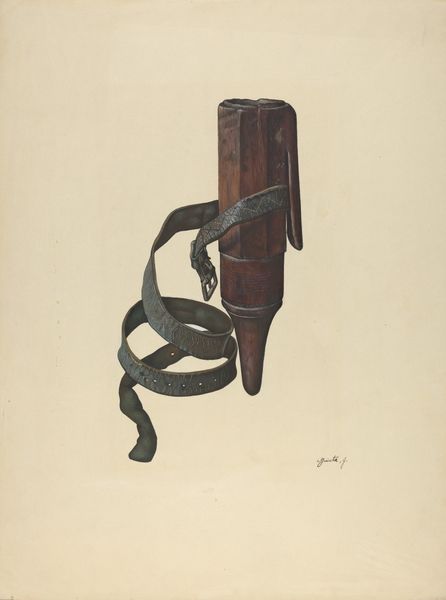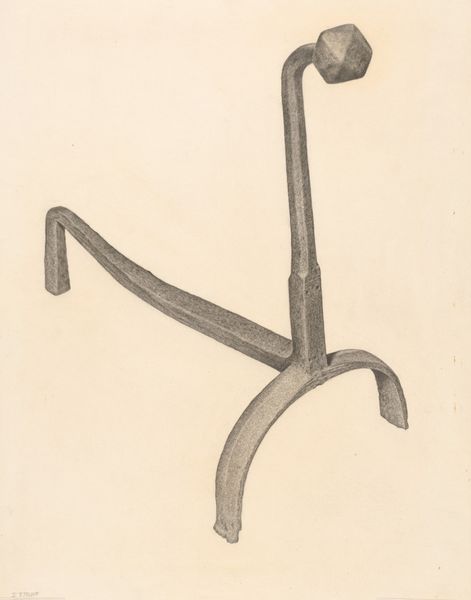
drawing, pencil, graphite
#
drawing
#
charcoal drawing
#
pencil drawing
#
pencil
#
graphite
#
academic-art
#
watercolor
#
realism
Dimensions: overall: 40.7 x 32.1 cm (16 x 12 5/8 in.) Original IAD Object: 3 3/4" long; 2 3/4" wide; 4 3/4" high
Copyright: National Gallery of Art: CC0 1.0
Curator: Let’s explore this image of a "Wrought Iron Betty Lamp," a work created around 1937. The artist, H. Langden Brown, used pencil, graphite, and watercolor to capture this functional object. What’s your initial reaction? Editor: Stark simplicity comes to mind. The lamp feels suspended in time and space. There's a melancholy in its presentation—almost as if we’re viewing an artifact of forgotten domesticity. Curator: It's interesting that you perceive that melancholy. Consider how Betty lamps historically represent resourcefulness, especially among women in lower economic classes who relied on them for light. Brown’s choice of materials—the somber pencil and graphite, accented by minimal watercolor—underscores the grit and lived experiences linked to this tool. Editor: Absolutely. Light is such a primal symbol: knowledge, safety, warmth, divinity. A humble lamp like this recontextualizes all those big themes into something very intimate and human scaled. You can imagine the stories and labor illuminated by it. How might this lamp have symbolized freedom for an enslaved person, for instance? Curator: Exactly! The lamp takes on multiple identities depending on who's holding it. For someone in power, it might symbolize industry or wealth generated after dark. For others, its meager light provided the literal means to read, write, and challenge existing power structures. What persistent visual cues can you pinpoint in the piece? Editor: The upward reaching hook is a key detail; it evokes reliance—dependence upon ceiling beams and hooks. The rusty texture, beautifully captured, reminds us of age, labor and, yes, class dynamics. All contribute to the symbolism of this relatively simple piece. Curator: That’s a crucial consideration. I agree the image presents layered commentaries on dependence, domesticity, and resourcefulness, even now, decades after its making. Editor: And it invites introspection, causing us to wonder about how such objects reflect and refract social histories. It makes me ponder what future archaeologists will infer about our lives through the mundane items we leave behind. Curator: Well, looking at H. Langden Brown’s work, perhaps they’ll glimpse into what gave light, both literal and symbolic, to people from long ago. Editor: A quiet but powerfully resonant testament indeed.
Comments
No comments
Be the first to comment and join the conversation on the ultimate creative platform.
